Category: Content
Good Call: Nine Times the Academy Got it Right
We all know the Academy gets it wrong sometimes.
Like when Shakespeare in Love won Best Picture over Saving Private Ryan, or how The Shining wasn’t even nominated, or when Dances With Wolves cleaned up in 1991 (I mean, c’mon, it’s good, but not that good).
But what about when they called it right? When tradition was defied with a surprising choice, or an overlooked creative was finally given his or her due?
We don’t hear about those moments as much.
Here are some of the wisest, most surprising, just plain best decisions ever made at the Oscars.
Parasite Wins Best Picture
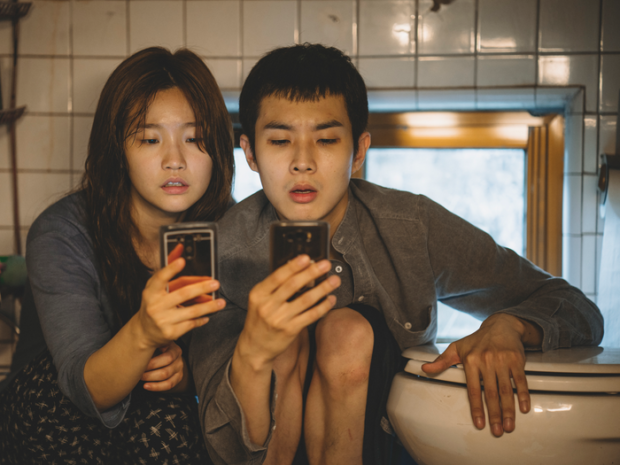
It was assumed that Parasite would take home Best International Feature in 2020.
A turn up for the books so, when it was awarded Best Picture too.
It’s even more surprising when you consider the stacked card from that year: The Irishman, Marriage Story, 1917 and Once Upon a Time in Hollywood… All great films, all more classic, Oscar-y, choices than the winner.
But, win it did, becoming the first non-English film to take home the night’s biggest prize.
Hopefully it opens the door for many more.
Roger Deakins Wins Best Cinematography
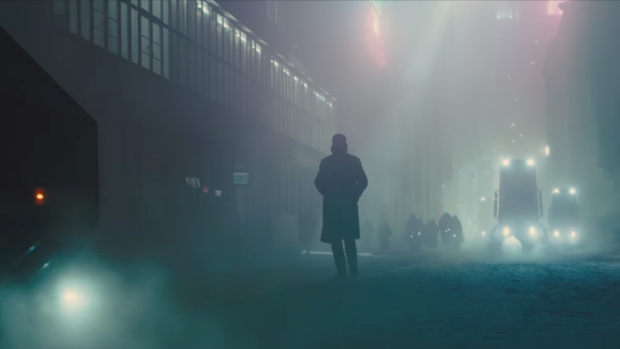
It was fourteenth time lucky for Roger Deakins at the 90th Academy Awards.
One of Hollywood’s most celebrated cinematographers, his filmography speaks for itself – The Shawshank Redemption, Prisoners, and No Country For Old Men, to name a few – and although oft nominated, he’d never won the big one.
That was until 2018, when he was rewarded for his depiction of the brutal, beautiful dystopia of Blade Runner 2049.
He wouldn’t have to wait as long for his second, winning in 2020 for his innovative work on 1917.
Frances McDormand Wins Best Actress
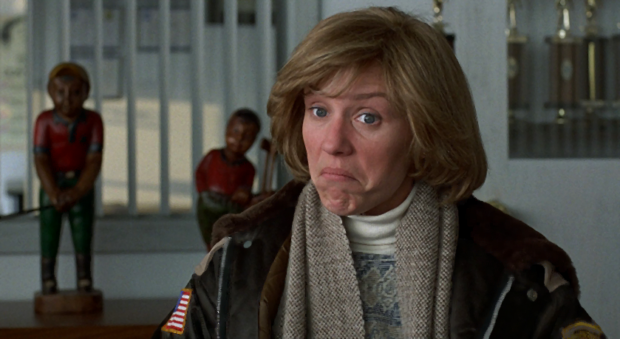
Of all the films nominated in 1997, Fargo is the one that has passed the test of time (and with flying colours, I might add).
However, it underperformed on the night, winning only two of its seven nominations.
At least Frances McDormand won Best Actress. I’ll leave it to writer Dan Jackson to sum up why (you can read the full article here):
Oh, you betcha!
The Lord of the Rings: The Return of the King‘s Record-Equalling Haul
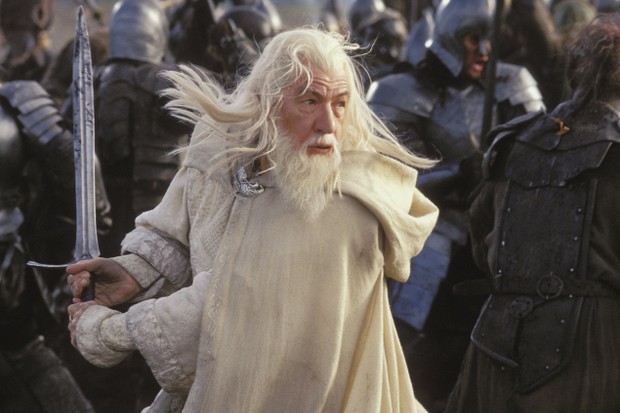
Fantasy movies: the only genre less popular than Horror and Sci-fi at the Oscars.
It’s rare to see one nominated, let alone win. So it was nice to see the Academy go against tradition in 2004.
Besides cleaning up with a massive 11 awards – equalling Ben-Hur and Titanic‘s record – The Return of the King was also the first bona fide Fantasy to win Best Pic.
A well-deserved victory lap for a staggering cinematic achievement.
Trent Reznor and Atticus Finch Win Best Original Score
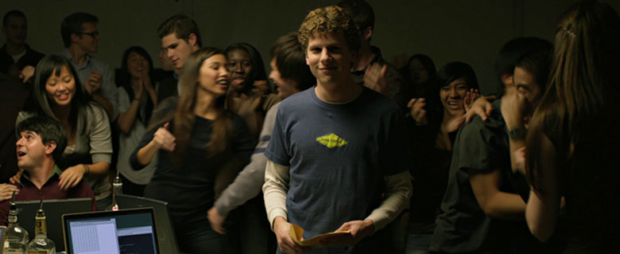
Career pivots don’t come more successful than Trent Reznor and Atticus Finch’s foray into movie music.
The Social Network would be the first of many, and what a way to start.
It’s a fantastic score. All moody synths and twitchy rhythms, it’s atmospheric, anxious, and haunting, and key to why the film works so well.
Hans Zimmer was nominated that year too, for his awesome Inception soundtrack. Any other year, he probably would have won – but Reznor and Finch deserved it.
The Academy doesn’t often go for newcomers, but I’m glad they did in 2011.
Martin Scorcese Finally Wins Best Director
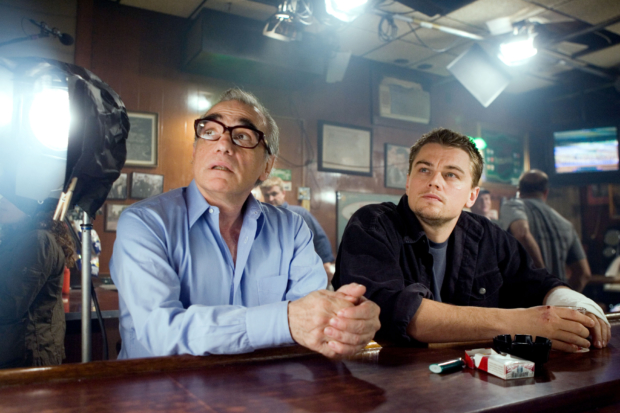
The Academy hasn’t been kind to ol’ Marty.
Not only has he missed out on Best Director for some absolute masterpieces, but he wasn’t even nominated for some of his best work – I’m talking Mean Streets, Cape Fear, King of Comedy and Taxi Driver.
Still, at least he won for the ludicrously entertaining The Departed.
Almost makes up for him not winning for Goodfellas. Almost…
Adrien Brody Wins Best Actor over Daniel Day-Lewis
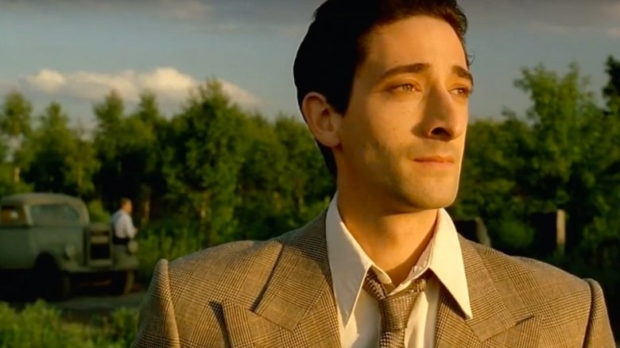
It was expected, for his scene-stealing Bill the Butcher in Gangs of New York, that Daniel-Day Lewis would win his second Best Actor statue.
But Adrien Brody, as Władysław Szpilman in The Pianist, took it in the end – and deservedly so.
It’s a wonderful performance. See for yourself:
While a lesser actor may have gravitated towards theatrics and melodrama, Brody wisely opts for subtlety, restraint and understatement. His physical transformation, while shocking, is incredible too.
The menacing Bill or the dignified Władysław. A tough call between two very different, and two very great, performances – but the Academy was on the money.
Spirited Away Wins Best Animated Feature
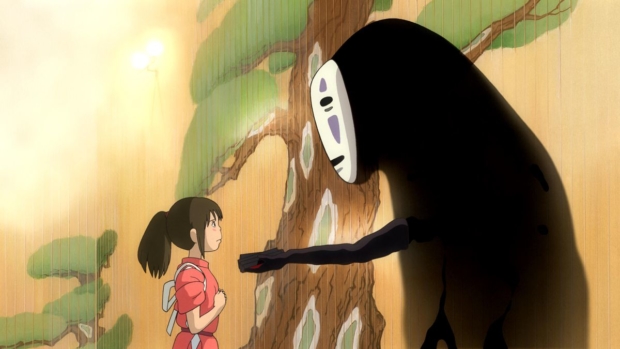
Pixar and Dreamworks have generally dominated this category, but this Studio Ghibli wonder was an exception to the rule.
It would have been a crime if it hadn’t won, really. Delightful, charming, moving, stunning to look at… All those things and more. Spirited Away is timeless.
Should have won Best Picture that year, too.
La La Land Wins Best Picture Over Moonlight
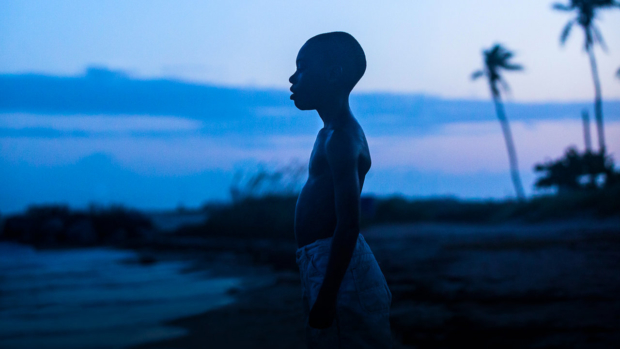
No, wait… Moonlight won over La La Land. Damn, it is easy to mix them up!
Seriously though. #Envelopegate was unfortunate for all involved. The La La Land team were stranded onstage holding an award that wasn’t theirs to hold, and everyone assumed it was poor Warren Beatty’s fault (it wasn’t).
Most unfortunate of all, I’d argue, for Moonlight, whose win has been a bit overshadowed by the controversy on the night.
This shouldn’t be.
A stunning piece of work, it’s also one of the Academy’s most unexpected Best Picture decisions; remember it wasn’t just La La Land that year, but big hitters like Hidden Figures, Arrival, and Manchester By the Sea too.
Definitely one the Academy got right.
After they got it wrong. 😉
Written by Conor Regan.
Inflight Dublin provides a range of fantastic movies to airlines, including all your Oscar favourites. If you’d like to learn more, contact us at mail@inflightdublin.com.
What’s da Craic?: 14 Fantastic Irish Films for St. Patrick’s Day
Ireland has a brilliant reputation in filmmaking today, but this wasn’t always the case.
Back in the early and mid-20th century, as the U.S., India, UK, Italy and France redefined cinema, the Irish were focused on other mediums, like writing, painting and music.
This started to change, however, in the latter half of the century.
From the 80s on, popular and acclaimed movies started to make waves globally while actors and directors – like Saoirse Ronan, Cillian Murphy and Jim Sheridan, to name a few – became household names.
Fast forward to today, and filmmaking is as integral to Irish culture as Guinness, Father Ted and Thin Lizzy.
And, being Paddy’s Day, what better time to celebrate this?
Here’s a list of some of the fantastic movies from Ireland, many of which, by the way, Inflight Dublin has put onboard planes as part of their inflight entertainment offering.
If you represent an airline, we can do the same for you: send a message to mail@inflightdublin.com to learn more.
Wolfwalkers
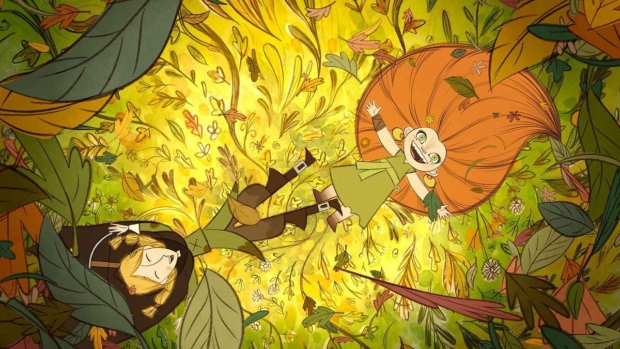
Song of the Sea, The Secret of Kells, Give Up Yer Aul Sins… The Irish have a real flair for animation.
Wolfwalkers, by renowned studio Cartoon Saloon, is the latest masterwork.
Recently nominated for Best Animated Feature Film at the Golden Globes, it has, just this week, made the Oscars category for the same.
And rightly so. From the mysterious, engaging story, to the stunning artwork, to the charming voice acting, this is a serious achievement.
A must-see!
Michael Collins

One of Ireland’s highest performers at the Box Office, both at home and abroad, Micheal Collins is arguably the country’s most well-known film.
Directed by Neil Jordan and starring Liam Neeson, it’s both a big-screen blockbuster, and an absorbing account of a key point in Irish history.
Some questionable accents aside, it’s still a great film. 😉
The Young Offenders
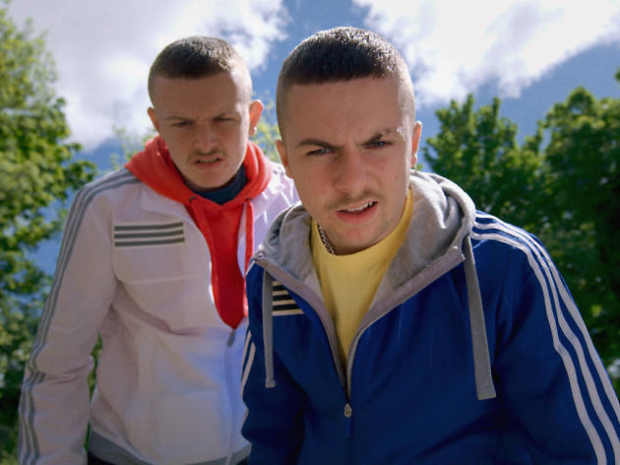
The Young Offenders is the definition of a breakout hit.
Made on a meagre budget of €50,000, it brought in almost fifteen times that at the Box Office, and has since become a hit TV series.
A spin on a real news story, it’s follows Conor and Jock, two teenagers from Cork, as they embark on a 160km road trip, on bikes, in the hopes of finding a bale of cocaine. Seriously!
A movie packed with warmth and wit, and great one-liners. For example: “There are two things you need for an adventure: a treasure map and someone dumb enough to go with you”.
Vivarium
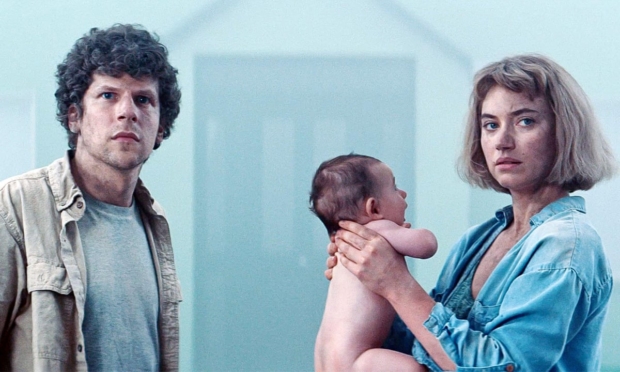
Directed by up-and-comer Lorcan Finnegan, and starring Jesse Eisenberg and Imogen Poots, Vivarium is an intriguing mix of social commentary and psychological horror.
It’s about a young couple who buy a new house in a neighbourhood full of identical ones. Problem is, as they soon find out, they can’t leave. Things only get weirder from there.
A distinctive film with a pertinent message, as well as some impressive, and very creepy, set and sound design.
Sing Street
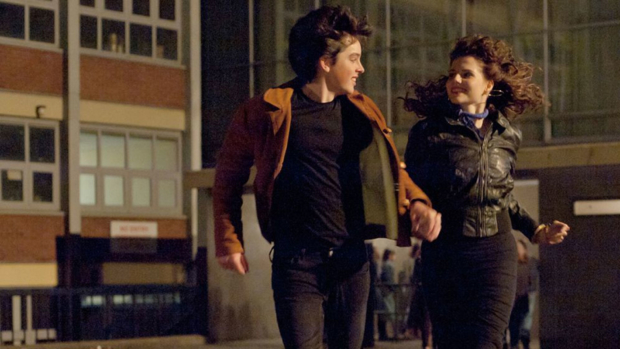
Who doesn’t love Sing Street?
About a boy who starts a band to impress a girl he likes, it’s touching, very funny, and loads of fun.
With tunes from The Cure, Duran Duran, The Jam, Joe Jackson and Motörhead, and some fantastic original music, the soundtrack is on point, too.
My Left Foot
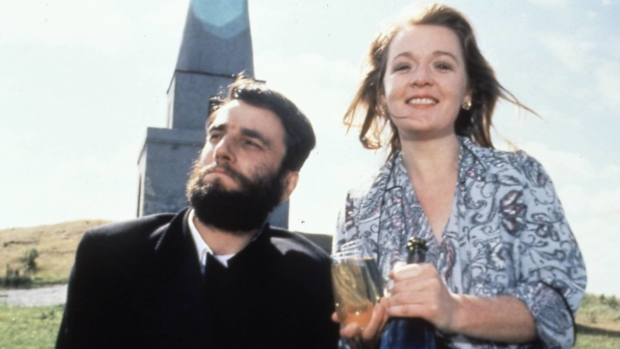
Daniel-Day Lewis’ Christy Brown is what we all think of when we think of My Left Foot.
Understandably, of course. it’s a masterclass, and bagged him his first of three Oscars.
But the movie wouldn’t be what it is without the exceptional cast: Brenda Fricker, as Bridget, deservedly won Best Supporting Actress, while Ray McNally’s portrayal of Christy’s dad is outstanding.
Twenty-two years since its release, My Left Foot remains one of Ireland’s most acclaimed and respected films.
Brooklyn
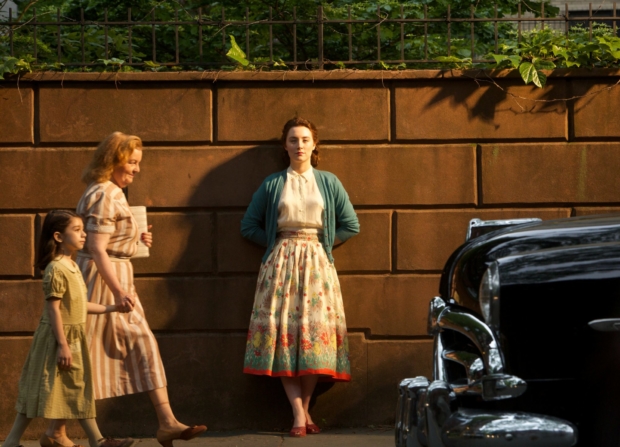
Ok, as you might guess, Brooklyn isn’t set in Ireland for much of its runtime. But there’s enough here to consider it, at least partly, an Irish film.
Directed by John Crowley (Intermission, The Goldfinch), and based on the novel by Colm Toibín, it’s a moving, bittersweet, and ultimately uplifting, story.
Saoirse Ronan, in a role that cemented her reputation as a major acting talent, is wonderful as Eilis.
The Camino Voyage
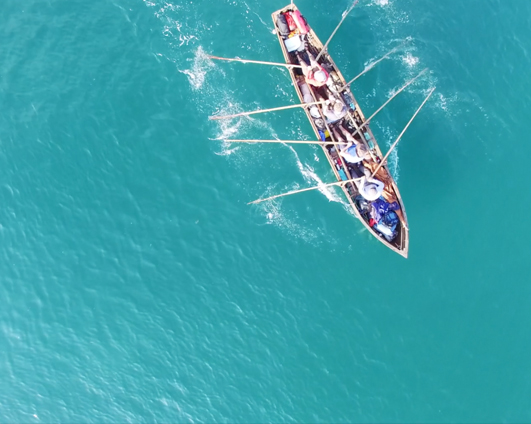
Ireland produces some excellent feature-length documentaries. The Camino Voyage is one of the best.
Released in 2018, it’s about a crew of five (one of whom music fans may recognise) attempting to sail across the 2,500 kilometre stretch of sea between Ireland and Spain – otherwise known as the Camino.
It’s inspiring, special, and for reasons I won’t go into lest I spoil it, more than a little heartbreaking.
The Commitments
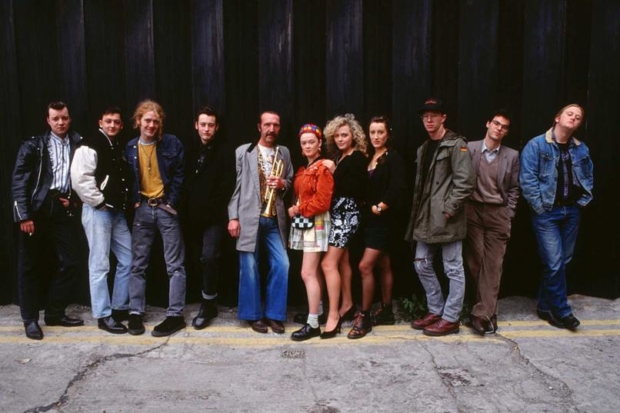
Film critic Renee Schonfeld had this to say about The Commitments:
I couldn’t agree more.
About Jimmy Rabbitte, a music-obsessed lad who gets a soul group together, The Commitments is one of Ireland’s most loved and enduring films.
If you haven’t seen the performance of “Mustang Sally” from the movie, you’ve been missing out:
A Date for Mad Mary
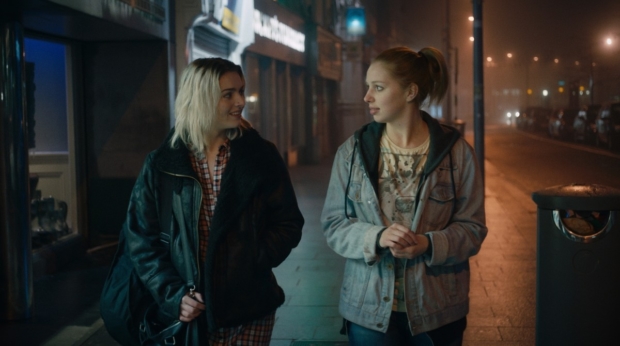
What a charming film this is!
It’s about “Mad” Mary McArdle, who embarks on a series of disastrous dates as she tries to find a plus-one for her best friend’s wedding. Things start looking up, though, when Jess appears on the scene…
The recipient of Best Film at the 2016 IFTAs, A Date for Mad Mary is a hilarious, kind-hearted movie about friendship, love and growing up.
Martin

One of the best shorts I’ve seen, Martin is a mini-documentary about a man who lives under a bridge in Dublin.
He doesn’t consider himself homeless though, and is, according to director Donal Moloney, “probably the happiest man I have ever met”.
But this isn’t just a character study or a social critique: it’s also about the friendship that develops between director and subject.
Insightful and inspiring.
Handsome Devil
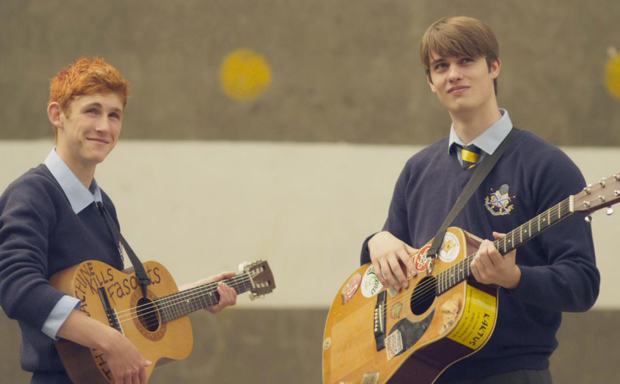
Handsome Devil is one of those that anyone can enjoy, and everyone should see.
Fionn O’ Shea and Nicholas Galitizine are Ned and Conor, two opposites who develop an unlikely bond while attending a rugby-obsessed school.
Also starring Andrew Scott as the boys’ inspiring teacher, the strong cast is matched by a screenplay that skillfully blends comedy and drama.
The Wind That Shakes the Barley
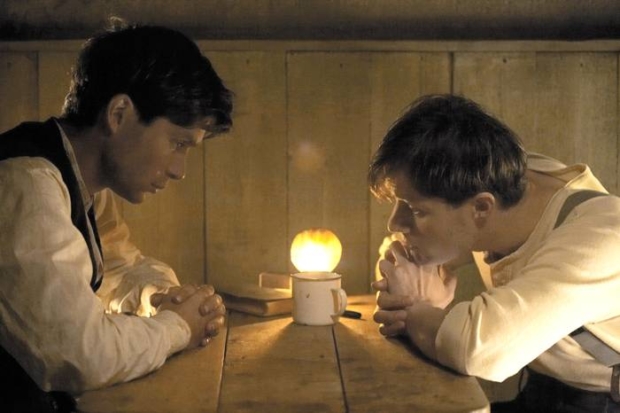
Directed by Ken Loach and starring Cillian Murphy, this historical drama, about two brothers fighting on opposite sides of the Irish Civil War, is gripping and hard-hitting.
Wonderful to look at, too; Barry Ackroyd’s cinematography is excellent.
It won the 2016 Palme D’Or and, with a return of over earning €2.7 million on its theatrical run, became the most popular independent Irish film ever released in Ireland.
The Quiet Man
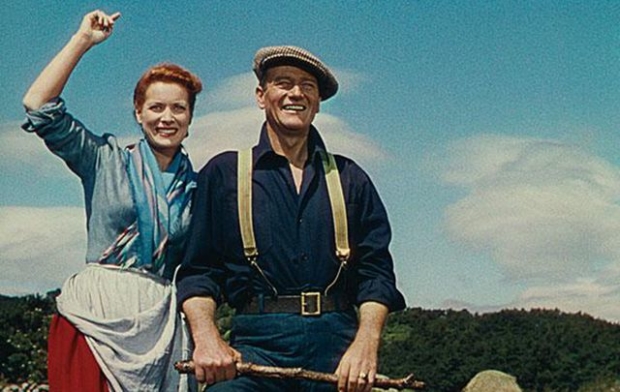
Ok, so it’s heavy on the clichés (I almost expect a leprechaun with a pot o’ gold to jump out at some point), but park the cynicism, and you’ll find a lot to enjoy in The Quiet Man.
The setting, for instance. Filmed in beautiful County Mayo, and expertly shot by celebrated cinematographer Winton C. Hoch, it all looks exceptionally lovely.
It’s also fun to see two pioneers of the Western, John Forde and John Wayne, do their thing in a very different environment. Best of all is Maureen O’ Hara’s performance as Mary Kate Danaher, which is simply iconic.
Ok, so Citizen Kane it is not; but what list of Irish films would be complete without The Quiet Man?
Written by Conor Regan.
Inflight Dublin prides itself on providing the highest quality content to our clients, and this includes the best that Irish cinema has to offer. If you’d like to learn more, contact us at mail@inflightdublin.com.
A Brief History of the French New Wave
What is the French New Wave?
The French New Wave, or Nouvelle Vague, was a film movement that started in the late 1950s in (you guessed it) France.
Origins
Of the opinion that cinema had become dated and out of touch, a group of French filmmakers and critics – influenced by Italian Neorealism and directors like Hitchcock and Welles – proposed a new vision for the medium.
Through a series of essays, they laid out their manifesto in influential movie journal, Cahiers du Cinema.
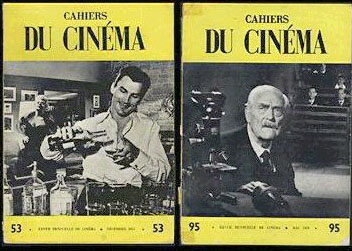
The critics had four main points:
- Cinema must be considered an important and significant artform.
- Filmmakers should experiment, and develop new formal techniques.
- Films must address themes and issues that relate to modern audiences: existentialism, memory, love, childhood and friendship – to name a few.
- A film’s director had full control over all elements of the film, from script to cinematography and everything in between. This is known as auteur theory.
These critiques were revolutionary for their time, and became the foundations for the French New Wave.
Notable Directors
Generally speaking, the movement’s directors were split into two collectives: Cahiers Du Cinema or the Left Bank.
The former, which included luminaries like Claude Chabrol, Francois Truffaut, Jean-Luc Godard and Jacques Rivette, produced several outstanding films that, for many, define the New Wave.
At the time, the Left Bank was less associated with the medium than the cinéastes of Cahiers.
However, this looser relationship had its advantages. Free from the formal constraints and expectations of traditional filmmaking, the Left Bank incorporated other forms – like literature, poetry and documentary – in their movies.
This cross-disciplinary approach led to some of the era’s most unique and interesting films.
Some names you might recognise from this group include Agnès Varda, Chris Marker and Alain Resnais.
Key Characteristics
These directors used techniques that were bold, new and experimental.
Two famous examples are Jean-Luc Godard’s rapid-fire jump cuts in À bout de souffle, which give it its unpredictable, energetic, “breathless” feel, and Francois Truffaut’s iconic tracking shots in Les 400 Coups:
Others developments include shooting on location, the use of direct sound and natural light, and filming with handheld cameras.
In terms of themes, filmmakers focussed on the personal, philosophical and political concerns of mid-20th century France.
Agnes Varda’s Cléo de 5 à 7, for instance, is a powerful look at existence, illness and fame, while Truffaut’s Jules et Jim and Jacques Rozier’s Adieu Philippine capture the anxiety, confusion and liberation of the post-war years.
Another notable feature was the use of ironic and sarcastic humour, rhetorical devices used to great (and often hilarious) effect.
Must-Sees
It’s a tough ask listing all of the great New Wave films! There are so many worth watching. Nevertheless, here are some absolute must-sees.
In no particular order:
- Hiroshima Mon Amour (dir. Alain Resnais)
- Les 400 Coups (dir. Francois Truffaut)
- Jules et Jim (dir. Francois Truffaut)
- Cléo de 5 à 7 (dir. Agnes Varda)
- Claire’s Knee (dir. Eric Rohmer)
- À bout de souffle (dir. Jean-Luc Godard)
- Les Bonnes Femmes (dir. Claude Chabrol)
- Lola (dir. Jacques Demy)
- Paris Nous Appartient (dir. Jacques Rivette)
Take your pick; they’re all fantastic.
Influence
In this excellent article, Miss Rosen describes how auteur theory changed cinema forever:
We can see the impact of this on the many stylists (or auteurs) of today.
Tarantino, Scorcese, the Coens and Nolan, for instance, have created bodies of work that are unmistakeably their own; this is a direct influence of the New Wave’s insistence on directorial autonomy.
Also, the movement’s storytelling and filmmaking techniques, so bold and adventurous back then, are now ingrained in cinema.
Take handheld cameras, as just one example. Used in everything from 28 Days Later to Eternal Sunshine of the Spotless Mind to Saving Private Ryan, you can’t imagine contemporary movies without them.
But if I haven’t convinced you, maybe Marty Scorsese himself will. Check out the below vid, where the huge influence the French New Wave had on his work:
Concluding Thoughts
Is it a stretch to say that the Nouvelle Vague created modern cinema?
It sounds like hyperbole, but it’s fair to say the likes of Pulp Fiction and Goodfellas arguably wouldn’t exist without it. Or, if they did, would certainly be very different.
Cultural and artistic significance aside, the films still hold up.
The best are funny, smart, profound, exciting and fun. In terms of visuals, style and themes, they don’t feel or look dated; which is quite something when you consider that some are close to seventy years old.
So, there you have it! The French New Wave.
It took the rulebook, ripped it up, wrote a new one, and, in the end, changed cinema forever.
Inflight Dublin prides itself on providing the best International titles to our clients, from the French New Wave and beyond. If you’d like to learn more, contact us at mail@inflightdublin.com.
Inflight Dublin Favourites: Christopher Nolan
To coincide with Tenet hitting inflight entertainment screens this month, we thought it’d be a nice idea to write a few words about our favourite Christopher Nolan films.
Hope you enjoy, and keep an eye out for more “Inflight Dublin Favourites” – coming your way soon.

Jamie Baker – Audio Services Lead
Prior to the release of Batman Begins in 2005, live-action Batman films had garnered a reputation for being campy, tongue-in-cheek, and often silly representations of the comic book icon and his Gotham City escapades.
The franchise was in dire need of an overhaul, but few people could have expected the dramatic shift in tone once Christopher Nolan took the helm.
Batman Begins is built on foundations of realism and grit. For the first time on the big screen, it tells the origin story of Bruce Wayne, the son of a billionaire who tragically loses his parents to one of the many criminals churned out by the sinister streets of Gotham City.
It takes relatively lesser-known villains from the Batman universe and magnifies them, creating complex characters with interesting motivations and unique relationships with Batman.
But what truly sets Nolan’s film apart from all the Batman films before it is its determination to focus in on Bruce Wayne as a character, adding layers of intrigue to the man behind the mask.
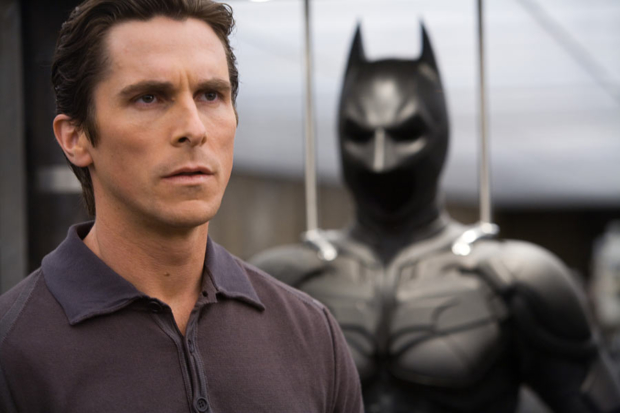
At its core, the film is a character study which follows a broken and brooding man’s search for purpose, fuelled by trauma, rage and an unwavering need for revenge.
While often overshadowed by the incredible narrative and mammoth Heath Ledger performance featured in the sequel, Batman Begins is my favourite Christopher Nolan film because it is the first movie to truly get Batman right.
It set up one of the most memorable and consistently brilliant trilogies in film history, and significantly raised the bar for all superhero movies that followed it.

Rika Argadireja – Metadata Executive
The Christopher Nolan movie I like the most is Interstellar. An epic sci-fi set in a dystopian time in the future when the earth is dying, it follows a group of astronauts who attempt to find a new home for mankind through interstellar travel.
The combination of time relativity adventures, space exploration, exceptional acting (I personally think that Matthew McConaughey’s acting is Oscar-worthy), an unpredictable cameo appearance, and aesthetically pleasing visuals perfectly compliment the story about humanity.
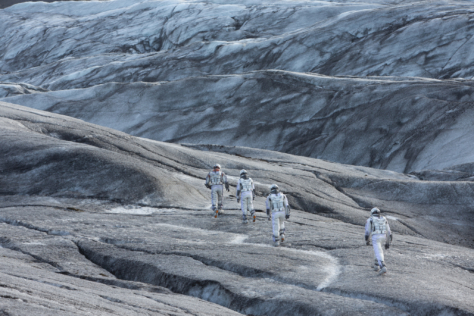
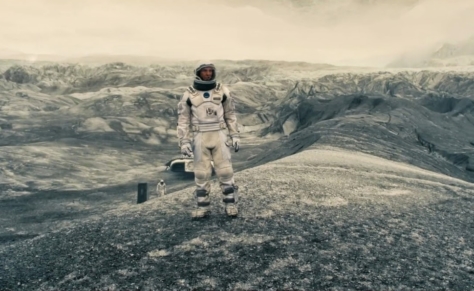
The other thing that I really like about the movie is the ending – I don’t want to say too much but the last five minutes are emotional, tear-jerking, and it made me realise how valuable family and time are.
I can’t recommend it enough, Interstellar is definitely high up on my most favourite movies list!

Conor Regan – Snr. Content Acquisitions Executive
Inception has all the hallmarks we’ve come to expect from a Nolan film: beautiful cinematography; thrilling action; a non-linear narrative; mind-bending visual effects; a pulsating Hans Zimmer score, and ruminations on philosophy and metaphysics.
But for me, one thing in particular gives it an edge over his other work, and that’s how moving it is.
Because if you take away the talk of extractions and projections, what we’re left with is a man, who’s exiled from his family, doing anything it takes to get home. And it’s this simple narrative strand that anchors the movie, and gives it its emotional heft.
Key to the film’s power is Dominick Cobb, Inception‘s brilliant, yet troubled, protagonist.
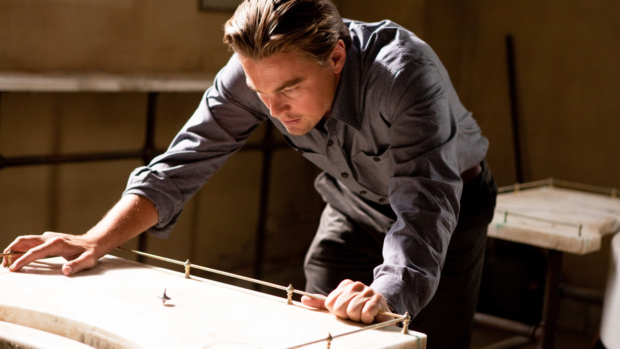
Like the director’s best characters, he’s a bundle of contradictions, and far from the “good guy” archetype of way too many action flicks. He mightn’t always be likeable, but, as we learn more about his backstory, we come to understand his motivations and empathise with his situation.
The closing scene, in particular, packs a serious emotional gut-punch. Without giving too much away, it’s a rollercoaster of excitement, tension, release, and ambiguity that stays with you long after the credits have rolled.
Inception isn’t just my favourite Nolan, but one of my favourites full stop. An awesome film.

Jane Boland – Marketing Executive
My favourite Christopher Nolan film has to be The Dark Knight, the second film in his Batman trilogy.
Although I am a big superhero film fan, I love how Nolan steers clear of the supernatural elements that make up a large part of most Marvel plots and presents to us a very relatable and realistic superhero story.
Although the problems faced were not as catastrophic as saving the universe, they seemed bigger and more impressive to overcome knowing the hero had no supernatural powers contributing to the outcome.
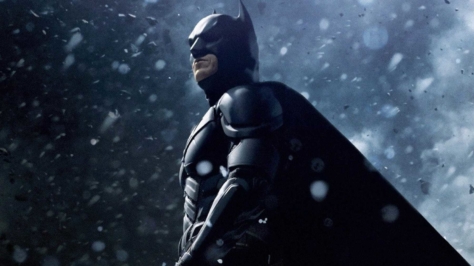
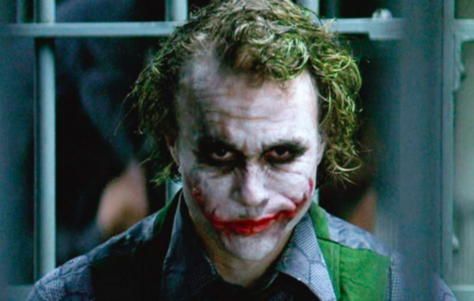
The casting was 10/10 with an outstanding performance from Heath Ledger as the Joker, which for many people carried the entire film. However, Christian Bale brought two great characters to life; the strong crime-fighting Batman and the wealthy yet troubled Bruce Wayne.
Intense action scenes such as the opening bank robbery scene and the car chase/truck flip are iconic still to this day.
I think I need a Batman trilogy movie marathon now!
Tenet will be available for inflight entertainment systems from January 2021. At Inflight Dublin, we pride ourselves on providing the best film, TV, audio and innovative content to our clients – and that includes Christopher Nolan films! If you’d like to learn how we can do the same for your airline, make sure to get in touch; you can contact us here.
All images property of Warner Bros. Entertainment Inc. All rights reserved.
Inflight Dublin selected by Ethiopian Airlines as its IFE Content Service Provider
Inflight Dublin has been awarded a 3-year contract for the provision of inflight entertainment (IFE) by long-standing client Ethiopian Airlines Group, the national flag carrier of Ethiopia.
Inflight Dublin has been providing IFE services to Ethiopian Airlines since 2010, ranging from content, wireless software, motion graphics and an interactive microsite.
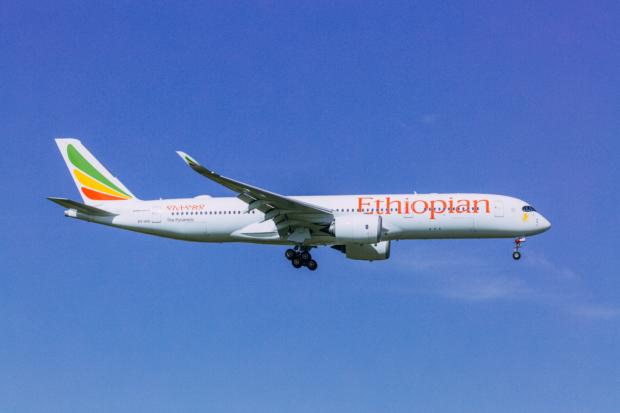
Inflight Dublin will service Ethiopian Airlines’ entire IFE-enabled fleet with content, including 3 B767 aircraft that utilise Inflight Dublin’s Everhub™ wireless software platform. The content package will feature Hollywood blockbusters, classic movies, TV shows, local content and YouTube videos.
Ethiopian Airlines is the largest airline in Africa, operating a fleet of over 128 aircraft for short, medium, and long-haul flights to 127 international destinations. The airline was also voted ‘Best Airline in Africa’ for the 3rd consecutive year at the Skytrax 2019 World Airlines Awards.
“It gives us great pride to continue working with Ethiopian Airlines and we will continue to strengthen the partnership we have developed over the past decade. Our goal for the next 3 years is to excite and delight Ethiopian Airlines passengers through a diverse and expanded content offering, underpinned by a range of innovative services. Our immediate focus however is to continue providing support to Ethiopian Airlines through, and beyond, the current crisis.” – Barry Flynn, Inflight Dublin’s CCO
Inflight Dublin chosen by Uganda Airlines as its IFE Content Service Provider
Inflight Dublin has been awarded a 5-year contract for the provision of inflight entertainment (IFE) by Uganda Airlines, the national flag carrier of Uganda. The agreement sees Inflight Dublin providing IFE content services to Uganda Airlines with quarterly updates commencing in January 2021.

Inflight Dublin is the largest CSP in Africa, currently in partnerships with more than ten airlines in the African region. This experience and knowledge of the African market allows Inflight Dublin to curate a bespoke content package for Uganda Airlines’ passenger audience, including Local and International content. The extensive catalogue also consists of Hollywood movies, TV Shows, Boxsets, Music, Games and Publications.

“As this is a new venture into the inflight entertainment space for Uganda Airlines, we wanted to choose an experienced and stable partner and Inflight Dublin ticked all the boxes. To partner with such a prominent operator will ensure a smooth entry into service and we look forward to working with them to continue providing the highest level of service to our passengers.” – Cornwell Muleya, Uganda Airlines’ CEO
Maintaining a current fleet of four Bombardier CRJ-900 aircraft, Uganda Airlines links Uganda to the rest of Africa by operating flights to nine destinations across the continent including Kenya, Somalia, Burundi, South Sudan, Tanzania and Democratic Republic of Congo. In December 2020, Uganda Airlines will take delivery of brand new Airbus A330-800neo and thereafter launch intercontinental flights to Europe, Asia and the Middle East
Inflight Dublin signs deal with YouTube sensation Dude Perfect
Inflight Dublin has announced an exclusive inflight content deal with Dude Perfect, American sport and comedy YouTube sensation.
The deal sees Inflight Dublin obtaining the distribution rights of Dude Perfect content on airlines for inflight entertainment, with their YouTube channel boasting an impressive 51 million followers and over 10 billion views. The exciting content targets sport and trick-shot lovers around the world, with their extensive catalogue of stunt videos and humorous skits, and new videos uploaded weekly to the platform.
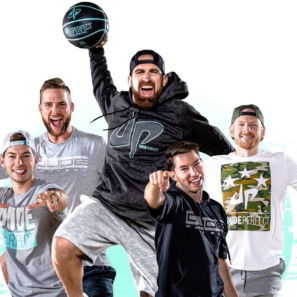
“We are very excited about working with Inflight Dublin to bring our creative entertainment to the airline industry.”
Coby Cotton, Dude Perfect Co-Founder
The Texas-based group is known for collaborations with top global brands such as Oreo, Pringles and Gillette. The partnership with Inflight Dublin will bring Dude Perfect’s thrilling video content on-board the biggest airlines, a unique addition to traditional IFE content to enhance the passenger experience. Inflight Dublin specializes in creating bespoke content packages for airlines, providing innovative, on-trend content such as Viral, YouTube and Wellness videos.
Becoming The Boss: Bruce Springsteen’s “Born to Run”
Pre-Born to Run: 1973-1974
Given his popularity for the last four-plus decades, it’s strange to think of a time when Bruce Springsteen wasn’t The Boss.
But rewind back to 1974, and this was just the case.
He had just released two albums (Greetings from Asbury Park, N.J. and The Wild, the Innocent & the E Street Shuffle) that had underperformed commercially, and his label, Columbia Records, were losing confidence.
The third one would be make-or-break: he needed to deliver, and in a big way.
But, before he could get to work, there was a hurdle to get over first.
As a way of testing the waters, Columbia decided that they’d only fund a single, not an album. Get on the radio, and they’d put up for the new record. If not, Bruce was on the first Greyhound bus back to New Jersey.
Good thing, so, that the song he came up with was “Born to Run”.
The career-saving anthem didn’t come quickly – recording sessions dragged on for six months – but when the dust settled, Springsteen would have his first big hit, and, crucially, a label that was now on-board.
Next up was the album of the same name.
Line-up Changes and Recording Problems
Things got off to a rocky start when keyboardist David Sancious, and drummer Ernest “Boom” Carter, decided to leave the E-Street Band.
Both excellent musicians whose playing was central to “Born to Run”‘s frenzied sound, it was an unwelcome and untimely blow.
The search for replacements wasn’t without its difficulties, as Springsteen memorably described in his 2016 memoir:
Eventually, Max Weinberg and Roy Bittan, two veterans of the Broadway circuit, joined on drums and keyboard.
As replacements go, he couldn’t have chosen better. They’d bring a solidity and finesse to the music, and become longstanding members (both are still in the band to this day).
Bruce and the E-Street gang then decamped to The Record Plant to get to work.
The sessions were, understandably given the circumstances, long, stressful and intense.
Springsteen, despite labouring over every individual note and tempo change, was chronically dissatisfied and, as time went on, some started to question if the album would ever get completed.
But fast-approaching tour dates would force his hand. Scheduled to coincide with the album’s release, they provided a much-needed deadline: now, for better or worse, he needed to finish the job.
So, a few frantic studio sessions later, he decided to cut (what he thought were) his losses; Born to Run was released, at last, on August 25th, 1975.
The Album Drops
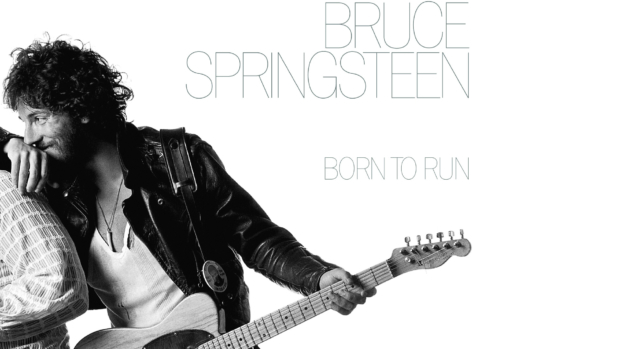
He needn’t have been so worried.
Born to Run quickly became a monster hit and would, in time, become recognised as one of the best rock albums of all time.
“Thunder Road” kicks it all off. Following a gentle intro of piano and harmonica, Bruce enters with one of his most iconic verses:
Screen door slams
Mary’s dress waves
Like a vision she dances across the porch
As the radio plays
The song gradually builds in intensity, until a Clarence Clemons’ sax solo, played over a deep half-time feel, brings things to a very theatrical, and very powerful, crescendo.
Is there a better opener to an album than “Thunder Road”? A thrilling introduction to the world of Born to Run and the characters that inhabit it, it’s just perfect.
“Tenth Avenue Freeze-Out” follows, and gives us a moment to catch our breath.
Held together by Weinberg’s rock solid backbeat, and elevated by Steve van Zandt’s horn arrangement, it’s a fun, laidback, loose number that draws on Springsteen’s love of Motown.
Quick aside – its 1975 performance at the Hammersmith Odeon is an absolute must-see:
“Night” is overlooked. A blur-collar anthem about frustration and escape, it’s energetic and catchy, and leads us nicely into the fantastic “Backstreets“.
The first of the album’s two epics, this is the discerning fan’s favourite. And with good reason: there’s a lot to love here, especially the raw and intense vocal. The impressionistic lyrics are excellent, too:
Catching rides to the outskirts
Tying faith between our teeth
Sleeping in that old abandoned beach house
Getting wasted in the heat
And then comes the one everyone knows, the one that made it all happen – the title track. It’s so familiar, but still so good: the opening drum fill; the tremolo guitar line; Garry Tallent’s driving and melodic bass; and of course, that hook:
‘Cause tramps like us
Baby, we were born to run
It’s his signature song for a reason.
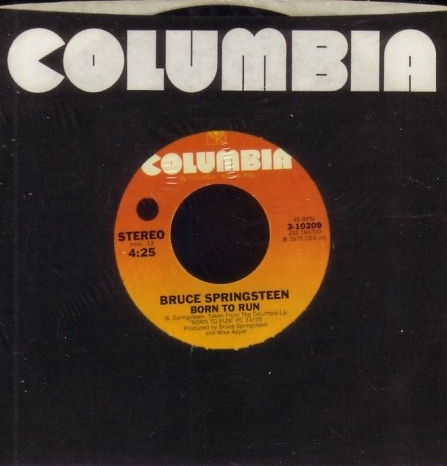
Influenced by Springsteen’s love of ’50’s rhythm and blues, “She’s the One“, is catchy and fun. Because of the ridiculous quality of the rest of the album, it’s the least essential track here – but that’s not to say it’s not great (which it is).
Tom Waits once said that he wished he wrote “Meeting Across the River“. It’s easy to understand why.
Over a sparse arrangement of piano, horn and upright bass, Springsteen spins an evocative yarn about two down-on-their-luck characters looking to score a deal. A haunting deep cut that, being more jazz than rock, highlights Springsteen’s (sometimes underappreciated) ability to bounce seamlessly between genres.
And last but certainly not least, we have “Jungleland“: the best track on the album, and many would say of the songwriter’s career (I’d say “Racing in the Street” personally, but it’s a close thing).
Opening with Suki Laha’s cinematic violin line, this nine-plus minute saga weaves through several movements before climaxing with a beautiful Clemons’ solo – his “greatest recorded moment”, according to Bruce himself.
Then, the song drawing to a close, Springsteen just howls; a stunning moment on an album that’s full of them.
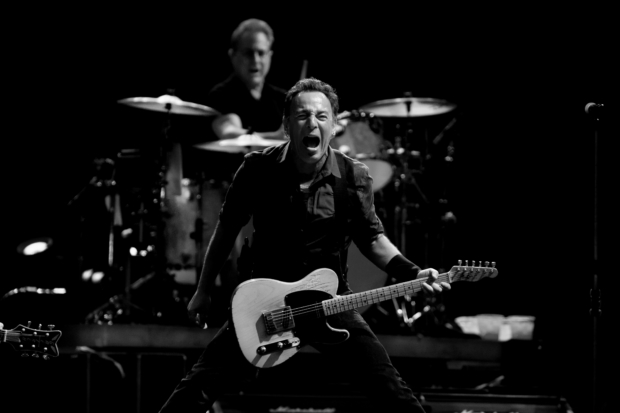
Becoming The Boss
Critically, the album was extremely well-received.
In Rolling Stone, Greil Marcus called it a “masterpiece” that “pays off on every bet ever placed on him”, and it was also voted third best album in the prestigious Village Voice annual poll.
It exceeded commercial expectations too. Peaking at number three in the Billboard charts, it would go triple platinum in 1986, and remains a reliable catalogue seller for Columbia to this day.
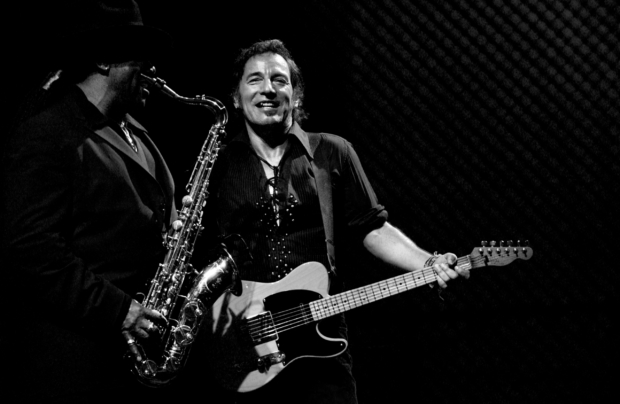
From here on out, the venues would only get bigger, and, by the end of 1975, Springsteen had made history by being on the cover of Time and Newsweek in the same week.
The struggling songwriter who couldn’t get on the radio, and was this close to being dropped, was no more.
In his place, stood the biggest, and most acclaimed, rock ‘n’ roller in the world.
Bruce Springsteen had become The Boss.
Written by Conor Regan.
At Inflight Dublin, we pride ourselves on providing the highest quality film, TV and audio content to our clients. If you’d like to learn how we can do the same for your airline, make sure to get in touch – you contact us here.
Image Credits (in descending order)
- Banner photo by Fabio Diena @ Shutterstock.com.
- The E-Street Band. Photo by Fabio Diena @ Shutterstock.com.
- Born to Run album cover. Photo by Eric Meola @ Colombia Records.
- Bruce Springsteen. Photo by Fabio Diena @ Shutterstock.com.
- Bruce Springsteen and Clarence Clemons. Photo by Fabio Diena @ Shutterstock.com.
Parasite: Status Set in Stone
Produced by Jamie Baker, Audio Services Lead.
At Inflight Dublin, we pride ourselves on providing the highest quality film, TV, and audio content to our clients. If you’d like to learn how we can do the same for your airline, please do get in touch by sending a message to mail@inflightdublin.com
International Film Round-Up
When Bong Joon-ho won the Golden Globe for Best Foreign Language Film, he opened his speech with this gem:
Once you overcome the one-inch tall barrier of subtitles, you will be introduced to so many more amazing films.
Wise words indeed.
Many of cinemas’ finest moments aren’t in English, so it’s fantastic to see the International market’s growth of the last few years.
So, in this spirit; here are five titles that I recommend you check out.
All are outstanding, and represent the best of International film.
Enjoy. 🙂
Pain & Glory (Spain)
Pedro Almodóvar’s 21st feature and his first since 2016’s excellent Julieta, Pain and Glory finds the celebrated Spanish director in a contemplative and reflective mood.
Starring long-time collaborative partner Antonio Banderas, the film focuses on ageing director Salvador Mallo as he navigates creative, physical, and existential crises.
Banderas is in top form in what many are calling a career-best performance. Very much worthy of his Best Actor win at Cannes and Oscar nomination for the same, those only familiar with his roles as brawny action heroes (and a certain sword-wielding CGI cat) are in for a welcome surprise.
The supporting cast, comprised of Penelope Cruz, Julieta Serrano, and Leonardo Sbaraglia, is just as impressive, and Alberto Iglesias’ unsettling and melancholic score complements it all perfectly.
A poignant look at growing older and how we come to terms with ourselves, Pain and Glory is a career-best work from the much-celebrated director.
Portrait of a Lady on Fire (France)
Portrait of a Lady on Fire has received a lot of praise for its visual style, and, with its sumptuous cinematography and stark set design, it’s easy to see why.
But it’s not just lovely to look at. A bittersweet romance about two star-crossed lovers, this period piece stays with you long after the credits have rolled.
Taking place in 18th century France, the film tells the story of Marianne, a young painter hired to paint Eloise’s portrait for her upcoming wedding.
However, because she’s a reluctant bride, Eloise is unwilling to commit herself to canvas, so Marianne is forced to paint her in secret. Soon enough, the artist falls for her subject.
As aesthetically pleasing as it is emotionally devastating, Portrait of a Lady on Fire is as David Ehrlich writes in his Indiewire review, “as perfect a film as any to have premiered this year.”
Parasite (South Korea)
Words like “masterpiece” get thrown around a lot, but it seems like the right one to use when describing Parasite.
Funny, unpredictable, thrilling, and moving while also providing a razor-sharp social commentary, this particular film merits the lavish praise that’s come it is way.
Recipient of the Palme D’Or (and an eight-minute standing ovation) at Cannes, it is also, as I’m sure you know, the first non-English film to win the Best Picture Oscar.
Hopefully the first of many.
It’s also had great success at the box office. Bringing in a worldwide total of $266.9 million it has, with ten million-plus admissions, also been seen by more than a fifth of its native South Korea’s population.
About two families at opposite ends of the class spectrum, the film centres around the impoverished Kims and the affluent Parks, and the twisted relationship that develops between them.
I’m going to leave it there though, because the less you know before diving in, the better. I strongly suggest you just do the sensible thing and watch it.
When Hitler Stole Pink Rabbit (Germany)
When I think of war films on the big screen, adult-only ones like Full Metal Jacket, Saving Private Ryan, Dunkirk, and 1917 come to mind.
However, there are others, like Grave of the Fireflies and The Boy in the Striped Pyjamas, that portray the problematic subject in a way that’s suitable for younger viewers.
When Hitler Stole Pink Rabbit, a German film based on the 1974 book of the same name, does this too – and quite brilliantly.
Told through the perspective of 9-year old Jewish girl Anna (a pitch-perfect performance from Riva Krymalowski), it tells the story of her and her family’s escape from Berlin, and subsequent experience as refugees.
This is an excellent adaptation. Tactful in its portrayal while never talking down to its younger audience, it’s a moving watch, and a powerful reminder of the devastating consequences of war.
Shoplifters (Japan)
Hirokazu Koreeda’s Shoplifters was one of the most highly acclaimed films of 2018, garnering critical praise and winning that year’s Palme d’Or.
The film is about a group of outsiders who engage in petty theft to make ends meet.
After one particular shoplifting run, two members of the gang, Osamu and his son Shota, come across a homeless girl in the cold who they decide to take in. They’re all quite content together – that is, until, an unforeseen incident tests the bonds that unite them.
Shoplifters is a touching and thought-provoking film.
It reminded me of the great Ken Loach in how it empathises with those who’ve fallen into poverty, and in the naturalistic, documentary-like way it depicts these lives onscreen.
Critic Robbie Collin nailed it when he calls it, in this review for the Telegraph, “compassionate, socially conscious filmmaking… that steals and snatches your heart”.
It sure does.
Written by Conor Regan, Senior Content Acquisition Executive.
At Inflight Dublin, we pride ourselves on providing the highest quality film, TV, and audio content to our clients. If you’d like to learn how we can do the same for your airline, please do get in touch by sending a message to mail@inflightdublin.com

